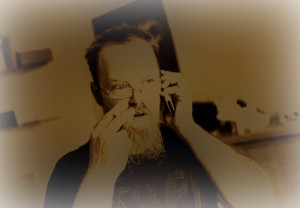The Danish Dream of Working Less Posted by Bjørn A. Bojesen on Jan 9, 2014 in Uncategorized

This man, known as Dovne Robert (Lazy Robert), has become a minor celebrity in Denmark for his negative attitudes towards working. There even was an interview with him in the NYTimes.
You take the blue pill – you get your drømmejob (job-of-your-dreams), with long, interesting, busy days and en fed løn (a fat salary). You take the red pill – you get a deltidsjob (part-time job) with short days and a lot of fritid (leisure time) – but considerably less penge (money).
I hope you forgive me paraphrasing The Matrix! The point I’m trying to make is … that you can probably not imagine how many Danes would’ve taken the red pill!
According to a fresh survey by the Danish statistical organization Yougov and the paper Metroxpress, every second Dane (49 % of the population) thinks that ”my leisure time” matters more than ”my job and career”. Only 19 % of the people in Denmark think it is more important at gøre karriere (to make a career).
”Are they nuts?” I just hear the reactions from typical arbejdsnarkomaner (workaholics, literally ”job junkies”) in career-minded countries like Mexico, the US and China. How could ”leisure time” ever matter more than the ”job and career” needed to make one’s dreams come true?
Well, for one thing, the ”Danish dream” is quite different from den amerikanske drøm (The American Dream). Sure, there are Danes in Hollywood and even a Danish astronaut or two, and Danes too are fond of their iPads & clothes & stuff… But still, the ideal for many people here remains at have det hyggeligt – to be in the warm state of ”cozy” togetherness and safety and comfort known as hygge. To lots of Danes, that’s more important than being famous or driving a fancy car. Hygge doesn’t mean that Danes avoid luxury – far from it. Yet it sometimes means that people here prioritize a bit differently. The Danish response to the reaction I imagined above might be: ”What’s the point of working all day to buy that big shiny villa, if you haven’t got the time to light a candle and share a good bottle of Friday evening wine with your friends?”
Secondly, and most importantly, Denmark is a relatively wealthy velfærdsstat (Welfare State). You don’t have to work so much in order to survive. The worst paid jobs – like students’ jobs – typically yield about 100 Kroner an hour (18 US dollars) – and that’s about as low as it gets. A bread costs about 20 Kroner. People who don’t have a family can work like two days a week and still pay for a room, food, clothes, a cinema ticket and a couple of beers…
Losing your job is not a catastrophe in Denmark. Most working Danes are members of an a-kasse or ”unemployment fund”. You pay a certain amount each year, and in case you lose your job, the other a-kasse members ensure that you get dagpenge (”day money”) for some time (a couple of years, at the most). If you get sick and can’t work, or if you lose your a-kasse benefits, you’re guaranteed to get kontanthjælp (”cash help”), a kind of monthly support from the state.
According to DR (Danish television), the support for jobless people is so good that 17.700 Danes would actually increase their incomes by quitting their jobs and registering themselves as unemployed! I guess that only the hygge of their arbejdsplads (workplace) keeps them there…

Build vocabulary, practice pronunciation, and more with Transparent Language Online. Available anytime, anywhere, on any device.
About the Author: Bjørn A. Bojesen
I was born in Denmark, but spent large parts of my childhood and study years in Norway. I later returned to Denmark, where I finished my MA in Scandinavian Studies. Having relatives in Sweden as well, I feel very Scandinavian! I enjoy reading and travelling, and sharing stories with you! You’re always welcome to share your thoughts with me and the other readers.




Comments:
mian naseem advocate:
Dear Sir, Madam
Amazing world facts
Translate research preface by
Naseem mukhtar advocate
Danish
Earth
1. Earth can be seen as a living, breathing organism: it regulates temperature, burns energy, continually renews its skin, and experiences changes to its face as it ages with time.b
2. Researchers in the the field of astrobiology have found that Earth’s current conditions are temporary and that Earth’s stable climate is an anomaly that will end in the next billion years.j
3. Under the oceans, there are the earth’s largest mountain ranges that circle the planet like the stitching on a baseball.j
4. More than 80% of the Earth’s surface is volcanic.e
5. Holes drilled as deep as 5 miles into the Earth’s reveal that the rock temperature increases about 37 degrees Fahrenheit per 320 feet. Even on the deepest sea floor, rock remains slightly above freezing.
Jorden
. 1. Jorden kan ses som en levende, åndende organisme : det regulerer temperaturen , forbrænder energi , hele tiden fornyer sin hud , og erfaringer ændringer til sit ansigt , da det aldre med time.b
2. . Forskere på området Astrobiology har konstateret, at Jordens nuværende forhold er midlertidige, og at Jordens stabilt klima er en anomali , der vil ende i de næste milliard years.j
3. . Under oceanerne , er jordens største bjergkæder , der omkredser planeten som syning på en baseball.j
4. . Mere end 80% af jordens overflade er volcanic.e
5. . Huller bores så dybt som 5 miles ind i Jordens afsløre, at klippen temperaturen stiger omkring 37 grader Fahrenheit per 320 meter . Selv på den dybeste havbunden , forbliver klippe lidt over freezing.
plz given me your opinion